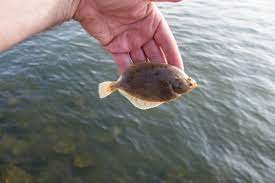As I slowly drifted a live shrimp over shallow mud and oyster bottom near Dauphin Island, Alabama, my cork just stopped, as if it was hung on the bottom. I tightened my line to dislodge the snag only to feel a tap on the other end. As I set the hook, the feeling was like nothing I had experienced before. The dull fight stayed deep, and I wasn’t sure what I had. Nearing the boat, the fish remained out of sight, until it was almost completely out of the water. A quick scoop with the net and I had my first ever flounder, and while I wasn’t even flounder fishing per se, I was hooked on learning more about this awesome eating and mysterious fish.
Landing this 3lb fish was a real bit of excitement for a young boy, as were most fish in those days. While the excitement of catching some species has faded slightly over the years, I still get just as excited when I see one of these camouflage warriors at the end of my line. And judging from my discussions with other anglers, I’m not the only one who has never lost his enthusiasm for these fish. In this comprehensive guide, we will glean information from two expert flounder fishermen and delve into the art and the science of flounder fishing. From the identification of common flounder species to the habitat, gear, and techniques you will need to catch them, whether you’re just getting into flounder fishing or you’ve been doing it for years, this article will equip you with what you need to know to put more flounder in the boat.
Flounder Fish Identification
Throughout the flounder’s range, there are many species that inhabit the same areas.
Continue reading at greatdaysoutdoors.com.

